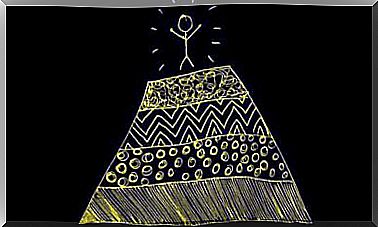Seligman’s Theory Of Preparation

How do you explain that some phobias are more frequent than others? The theory of preparation explains it to us.
Phobias are disproportionate fear reactions to harmless stimuli or to stimuli that are not completely harmless, but controllable. Regarding how phobias are acquired and maintained, there are countless theories, all of them partly correct.
Seligman’s preparation theory explains that we are born ready to fear certain stimuli more than others. For this, it is based on two central concepts, preparation and predisposition to the acquisition of phobias, concepts that we will deepen throughout the article.
General characteristics of the theory of preparation
Seligman developed his preparation theory in response to the theory of equopotentiality, which asserted that all stimuli have the same ease of conditioning. Against this, Seligman asserts that we are phylogenetically prepared to fear certain stimuli more than others.
This means that we are ready to condition some stimuli much more easily than others. This is due to an evolutionary process related to the need for organisms to adapt to the environment. This makes us more likely to fear dangerous stimuli that threaten the survival of the species.

Characteristics of phobias
Seligman said that phobias have four characteristics. They are as follows:
- Selectivity. Phobias are limited to a certain range of stimuli (some situations cause fear more easily than others). This characteristic seems to be linked to the survival of the species.
- Easy acquisition. Phobias can be acquired in a single event.
- Resistance to extinction. This is one of the most characteristic aspects of phobias: fear persists.
- Irrationality. One of the characteristics of phobias is the disproportion or lack of resonance between the real dangerousness of the stimulus and the anxiety response.
Preparation and predisposition, the central concepts
Preparation refers to the evolutionary processes of the species. Depending on how the stimuli are prepared to condition, we can identify three types of stimuli:
- Prepared stimuli. These are the ones that are biologically designed to be dangerous and harmful. This learning can be done automatically and in a single attempt.
- Unprepared or prepared stimuli. These are the stimuli that are not automatically learned as dangerous, and therefore require several attempts at association or conditioning.
- Counter-prepared stimuli. These are the stimuli that cannot be learned as harmful, despite continuous association attempts.
Predisposition refers to the person themselves and their ontogenetic development which makes them more likely to suffer from a phobia. Now let’s see how Seligman’s theory has been expanded.
The expansion of Öhman’s group preparation theory
Öhman’s group expanded the preparation theory and distinguished phobias based on their phylogenetic or evolutionary origin. He distinguishes between communicative fears and non-communicative fears.
Non-communicative fears are those that have no social or communicative function. Communicative fears are those that fulfill a social function between species, by transmitting a message.
Communicative fears include animal or interspecific phobias – common to different species – and social or intraspecific phobias. Animal fears have their origin in the behavioral system of defense against predators.
These fears generate avoidance or evasion responses triggered by automatic processes. These responses cause a great activation of the sympathetic autonomic nervous system.
Social fears are those that arise from dominance-submission processes in the same species. These are less automatic and more thoughtful processes. Responses that depend on controlled processes do not always produce sympathetic system responses.

An excellent example of preparation theory: the Garcia effect
The Garcia effect, from which Seligman himself suffered, explains why we rejected a food. This aversion occurs in a single event (easy acquisition) and is sufficient to maintain the avoidance response. It also lasts over time (the resistance to extinction of which Seligman spoke).
García and Koelling, in their research, found that not all stimuli were conditioned with the same ease. For example, stomach pain was easily associated with food or drink, but very difficult to associate with any other stimulus, such as light or sound.
As we said a little earlier, Seligman himself suffered the Garcia effect. His experience has shown that this association between food and upset stomach is so strong and so resistant to extinction that even reason cannot overcome this phobia (phobias are irrational).










